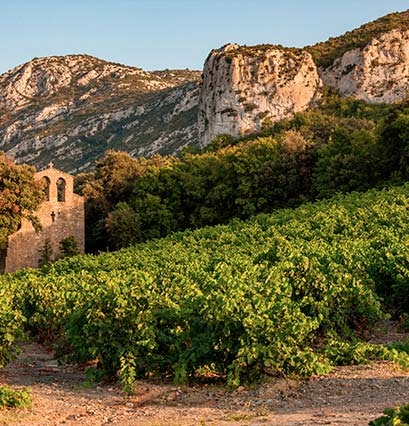
Roussillon
Roussillon is made up of about ten appellations that sit between the Mediterranean Sea and many large mountain ranges. With the sun shining down on it for more than 320 days a year, the region covers a mosaic of sublime terroirs from granitic sand and clay-limestone to brown and black schist, gneiss, and pebbles. It is renowned for its dry and sweet wines (vins doux naturels are a local speciality), producing mainly red wine (nearly 60%), followed by rosé (25%) and white wine (15%). The Roussillon winegrowing landscape is diverse, with a large proportion of caves cooperatives and trading houses. A wide range of grape varieties are grown – as many as 24 were reported in 2024 – and the region boasts probably the highest proportion of old vines in the world. France’s southernmost wine region covers the following PDOs or AOP: Collioure, Côtes du Roussillon, Côtes du Roussillon Villages, Maury Sec, Maury Doux, Banyuls and Banyuls Grand Cru, Rivesaltes and Muscat de Rivesaltes. In the case of the most reputed villages, the village name may also appear on Côtes du Roussillon Villages wines, such as Latour de France, Tautavel, Lesquerde, Caramany or Les Aspres. There are also two PGIs: IGP Côtes Catalanes and IGP Côte Vermeille.
Some of the region’s great estates to discover are Clos des Fées (Hervé Bizeul), Gauby, Roc des Anges, Mas Amiel, Le Soula, Danjou Banessy, Clos du Rouge Gorge, Pedres Blanques, Gardiés, Coume del Mas, Bruno Duchêne, Olivier Pithon, La Rectorie, Les Vins du Cabanon, Le Casot des Mailloles and Château Sisqueille.















































































